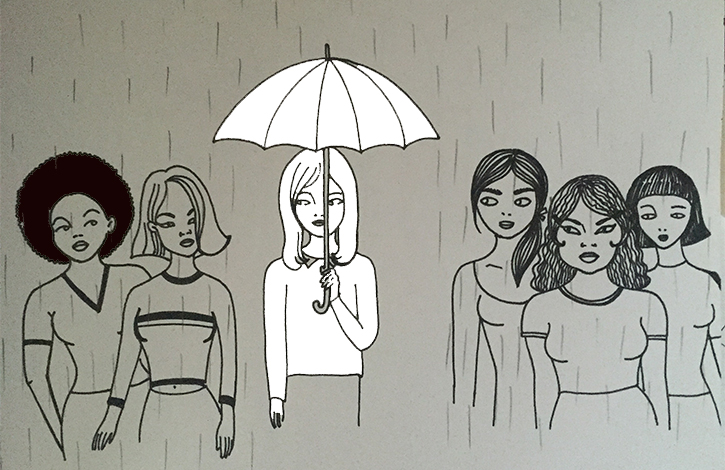Whiteness & Marginalization
Race alone can be so powerful that it can obscure how white people understand privilege.
Centering white voices in conversations of equity and civil rights does more harm than good.
April 12, 2021
The clearest sign of privilege is the inability to recognize that it is there in the first place. Further, after this privilege is recognized, it is still necessary to continue to acknowledge it and work to change the harmful, societal dynamics that exist and have benefited the privileged, even when no one is watching.
For people who are considered marginalized– groups that face discrimination on a variety of fronts– that are also white, it is of utmost importance to do these things, and at the very least, realize that whiteness overpowers all others aspects, no matter how marginalized one’s identity.
When I was 12, which happened to be the same year that I came out, I still thought that my identity as a queer woman could overpower the privilege and opportunity that had been granted to me through my whiteness.
More accurately, I didn’t think about how much my whiteness impacted my level of privilege at all, especially in comparison to other aspects of my identity. I focused on feminism, unknowingly but regrettably, through an unimpaired lens of privilege, lacking much of the intersectionality that I now prioritize in my activism.
This was frighteningly easy to do as I continued to grow through a predominantly white school environment. My peers, including BIPOC (Black, Indigenous, people of color) students who do not get to see themselves fully represented in their education, and I were never explicitly taught that whiteness, despite all other factors, gave people a step ahead in life, with the likely reason being that some white parents would have an issue with the message’s inclusion in the curriculum.
While I am glad that I was able to independently learn about the importance of intersectionality and the existence of a harmful societal power dynamic, and that I can continue to do this by taking from the skills I have gathered throughout my education, nothing that I have mentioned thus far is commensurate with achievement.
This is because admitting to privilege, although important, is only performative without explaining further or participating in real work to facilitate change.
At the outset of my research on the idea of privilege, I was concerned by the term “overpower” because “white power” was a term that I was familiar with. Later, it became clear that continuing to allow white voices to overpower conversations about oppression and marginalization could pave the way to a sort of white supremacy that is less condemned in modern society — a kind of supremacy that allows white people alone to enact change that benefits them and their experiences only.
The National Museum of African American History and Culture describes whiteness as “the way that white people, their customs, culture, and beliefs operate as the standard by which all other groups of [people] are compared.”
This white-centered view of the world allows white people to go through life knowing — or more accurately, thinking — that they are the racial group that everything and everyone else revolves around.
The same view makes it much easier for white people who are also considered marginalized to feel and act as if their experiences are the same as people of color who fall under the same category as them.
What makes matters worse is that this not only ignores the struggles of people of color, but it exploits their ideas into more palatable ones and diminishes the significance of their struggle. It lets white people prioritize their own voices rather than the voices of individuals and communities who have to deal with constant oppression on a much larger scale and on a variety of levels that are unimaginable to those who have not dealt with similar obstacles.
A white-centered lens is easily normalized in school environments that have a large white population, like ours. This, paired with a lack of adequate action, hurts students of color and lessens their ability to feel comfortable and safe while at school, a place that is supposed to guarantee such things.
Even though there is no one direct solution to this issue, steps can be taken to reduce the problem at hand and eventually eradicate it.
Allowing students of color to speak and act on what they think needs to be done should be a priority of district leaders. Decentralizing the curriculum and community conversations from whiteness and placing it in the hands of all students is a clear path towards progress.












